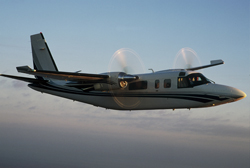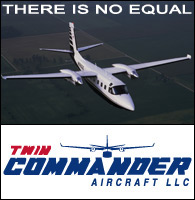Last Call for Bonus Depreciation
on Aircraft Upgrades

Louis M. Meiners, Jr., CPA

Bonus depreciation was first introduced in 2002 as a tax incentive provision to encourage investment in new capital assetts to spur economic recovery. It expired as the economy improved, and was most recently reintroduced as part of the 2009 Economic Stimulus Package for new capital purchases placed in service in 2009.
A companion provision is an expansion of the expensing election of Section 179 of the IRS tax code that allows for increased depreciation deductions for small business taxpayers. Both provisions expire for assets placed in service after December 31, 2009.
WHAT IS BONUS DEPRECIATION?
Bonus depreciation is an incentive provision that allows a 50 percent immediate deduction as an acceleration to the typical depreciation over the asset’s designated depreciable life. For aircraft primarily used for non-commercial purposes, the recovery life is normally five years; for commercial aircraft, the recovery life is seven years.
The remaining basis of the asset (after subtracting the 50 percent already deducted) will be written off over the remaining recovery life, usually using an accelerated method. A taxpayer who uses bonus depreciation for regular tax purposes will have it allowed for alternative minimum tax purposes as well.
WHAT IS ENHANCED EXPENSING?
A qualifying small business taxpayer is allowed to expense up to $250,000 in capital purchases for assets placed in service in 2009. Unlike bonus depreciation, this provision applies to both new and used assets. A small business taxpayer is defined as one who invests less than $1,050,000 in total capital purchases during the taxable year. The maximum amount that may be expensed is limited to the amount of taxable income from any of the taxpayer’s active trades or businesses.
Taxable income for this purpose is calculated before the expensing deduction itself, net operating loss carry backs or carry forwards, and other losses suspended due to basis limitation or passive activity classifications. Any amount suspended under the taxable income limitation is carried forward indefinitely.
It is important to note that the taxable income limitation is calculated on the taxpayer’s combined trade or business income; it is not calculated on a per-trade or per-business basis. Finally, for individuals, taxpayer’s wages paid to a taxpayer constitute trade or business income for purposes of this calculation.
INCENTIVE PROVISIONS USED IN TANDEM
A taxpayer may combine the benefits of both provisions and select which assets qualify for expensing. For example, assume that an aircraft owner decides to acquire two TPE331-10T engines for a total cost of $500,000. Assume that $250,000 of that cost is for the used core value and the balance is for new components and installation. The taxpayer may elect to expense the used portion of the cost and take bonus depreciation on the new portion. First year deductions would consist of $250,000 expensing, $125,000 bonus depreciation, and $6,250 regular depreciation, for a total of $381,250, or 76 percent of the cost of the engine upgrade.
If the aircraft owner upgrades his existing engines to Dash 10T configuration, the entire cost of the upgrade and installation qualifies for bonus depreciation. The same is true for a Grand Renaissance completion—the entire cost of the project qualifies for bonus depreciation. Note, however, that the upgraded aircraft must be placed in service before the end of 2009.
WHAT IS PLACED IN SERVICE?
The placed in service requirement mandates that the asset be placed in a state of readiness for use in the manner for which it is intended. For an aircraft, we strongly suggest that a flight be taken before year-end. If the expenditure is an improvement to an aircraft, for example a new avionics panel, it will be essential that the aircraft be airworthy with the new improvement installed.
ASSET QUALIFICATION
In order to qualify for bonus depreciation or the expensing election, the asset must constitute property used in a trade or business. This generally excludes assets used less than 50 percent for business purposes as well as certain leased assets. Through proper planning, it is generally possible to use related party leasing for sales tax purposes and qualify for bonus depreciation and expensing.
FORM MATTERS
The interrelationship between bonus depreciation and the related party rules, the taxable income limitations for expensing, liability issues, FAA limitations, and operating concerns all play essential roles in designing a structure that meets the qualification requirements. It is also essential that key income tax elections be affirmatively made and properly disclosed. For information relating to these issues, please visit www.advocatetax.com.
Advocate Consulting Legal Group, PLLC is a law firm whose practice is limited to serving the needs of aircraft owners and operators relating to issues of income tax, sales tax, federal aviation regulations, and other related organizational and operational issues.
IRS Circular 230 Disclosure. New IRS rules impose requirements concerning any written federal tax advice from attorneys. To ensure compliance with those rules, we inform you that any U.S. federal tax advice contained in this communication (including any attachments) is not intended or written to be used, and cannot be used, for the purpose of (i) avoiding penalties under federal tax laws, specifically including the Internal Revenue Code, or (ii) promoting, marketing or recommending to another party any transaction or matter addressed herein.







